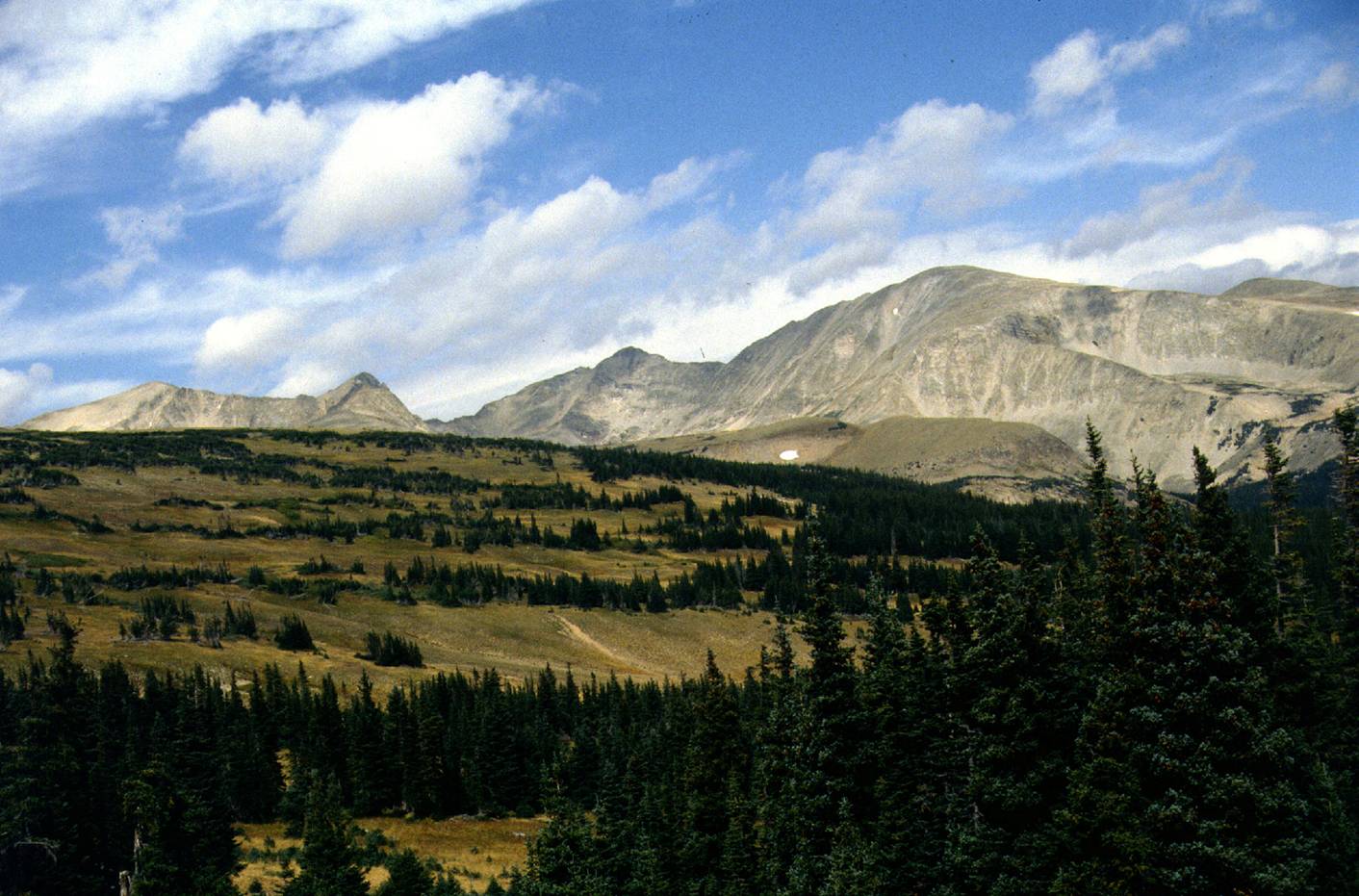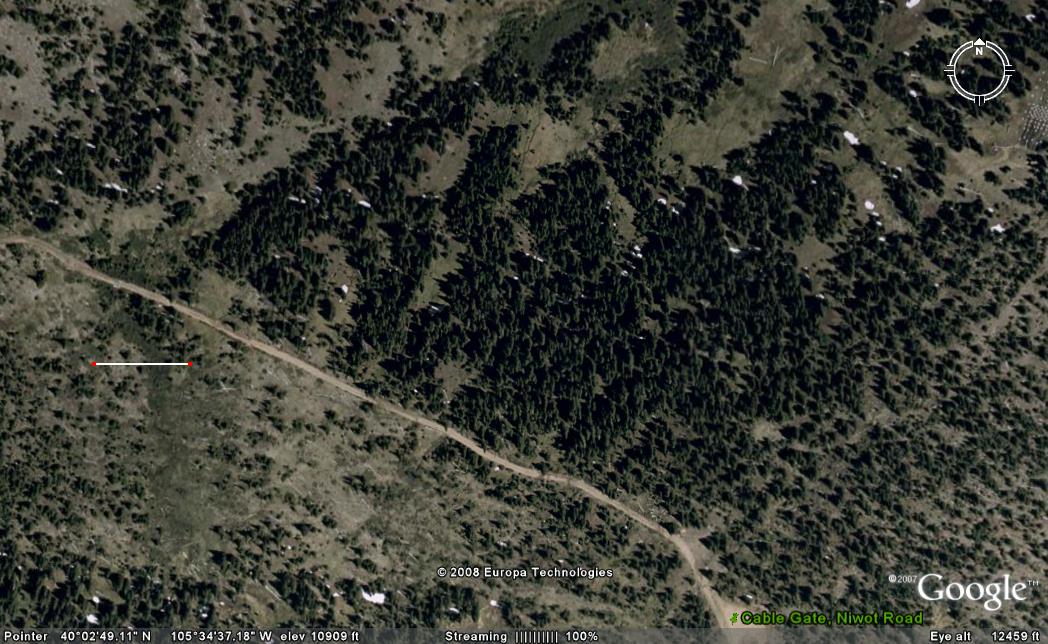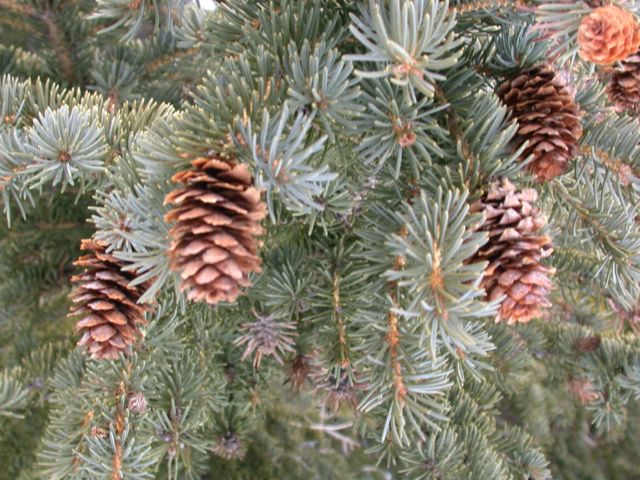| Bring |
- Good flotation
(snowshoes, skis with skins)
- Layers - be prepared for
standing around in the cold/wind once at
our field site
- Field
journal
- "Topo
map for Niwot Ridge" handout
(passed out first day at the
Lodge)
- Pack
lunch, lots of water/fluids
- Toe/Hand
Warmer Packs - if you're
prone to cold toes/hands
- If you
have: Compass
& Clinometer (for measuring slope):
- as
instruments, or
- phone
apps - my favorite Clinometer
app is by plaincode, uses camera for
sighting:
- If you
have:
- Snow
shovel
- Avi
probe
- Hand
lens
- Topo
map for Indian Peaks
Forecast:
Niwot
treeline (11,000')
|

Ribbon
Forests (photo from
Hope Humphries and Patrick Bourgeron) |
|
| Field Locations /
Handouts |
- Our
highest site for the day = just west of
Cable Gate
- Handouts:
- Photographic Guide to
Conifers & ID
Key (pdf,
3M)
- Data
Entry / Analysis - Instructions:
Done separately for each Transect.
- Enter
data from your field datasheets into
separate Data Entry Worksheets for:
Team
A, Team
B (xls, 30k).
- Team
B: Enter your data from
the bottom up, so that the row
label and your meter plots match (e.g.
50m data are entered in the row for
'50m')
- Enter
slope data in %.
- If
your slope data are in degrees,
use this spreadsheet to convert
degrees to % - xls
- For the Summary worksheet to
work, do not change the names
of the A & B Data Entry files
- Put A
& B Data Entry xls's into the same
folder as the "Combined
Summary" Analysis Spreadsheet: xls,
200k. Name the folder according to
the name of your transect or group.
- Open the
"Combined Summary"
Spreadsheet, click 'Update'
- Check
that your data have been imported
correctly - review the values plotted
in the 'Transect Profile' tab.
- Discuss
graphs and interpret.
|

Click to
enlarge
|
|
| Lesson points |
- How
do landscape features (abiotic and biotic) alter
snowpack in ways that affect the distribution of
vegetation just below timberline?
- What are the abiotic and
biotic controls over the structure of vegetation
in Subalpine Forests? In what seasons are
each most important?
- See also Vegetation Lesson
points above
|
| Related links |
|
| Other Resources |
|
| More on Vegetation Zones |
- From
Grassland to Glacier: The Natural History of
Colorado and the Surrounding Region, by C.F.
Mutel & J.C. Emerick (1992, Johnson Books,
Boulder CO)
- Rocky
Mountain National Park Natural History
Handbook, By John C. Emerick (1995,
Roberts Rinehart Publ. and Rocky Mountain Nature
Assoc.)
- A Sierra
Club Naturalist’s Guide to The Southern
Rockies, By Audrey Benedict (1991,
Sierra Club Books)
|
| More for Plant Id |
- Rocky
Mountain Flora, by Wm. Weber (1976, Colorado
Associated Univ Press) -- the Marr Lab library has
many copies.
- Winter Guide
to Central Rocky Mountain Shrubs, by Wm.
McKean (ed.) (1976, 2nd ed., Colorado Div of
Wildlife, Dept of Natural Resources).
|


